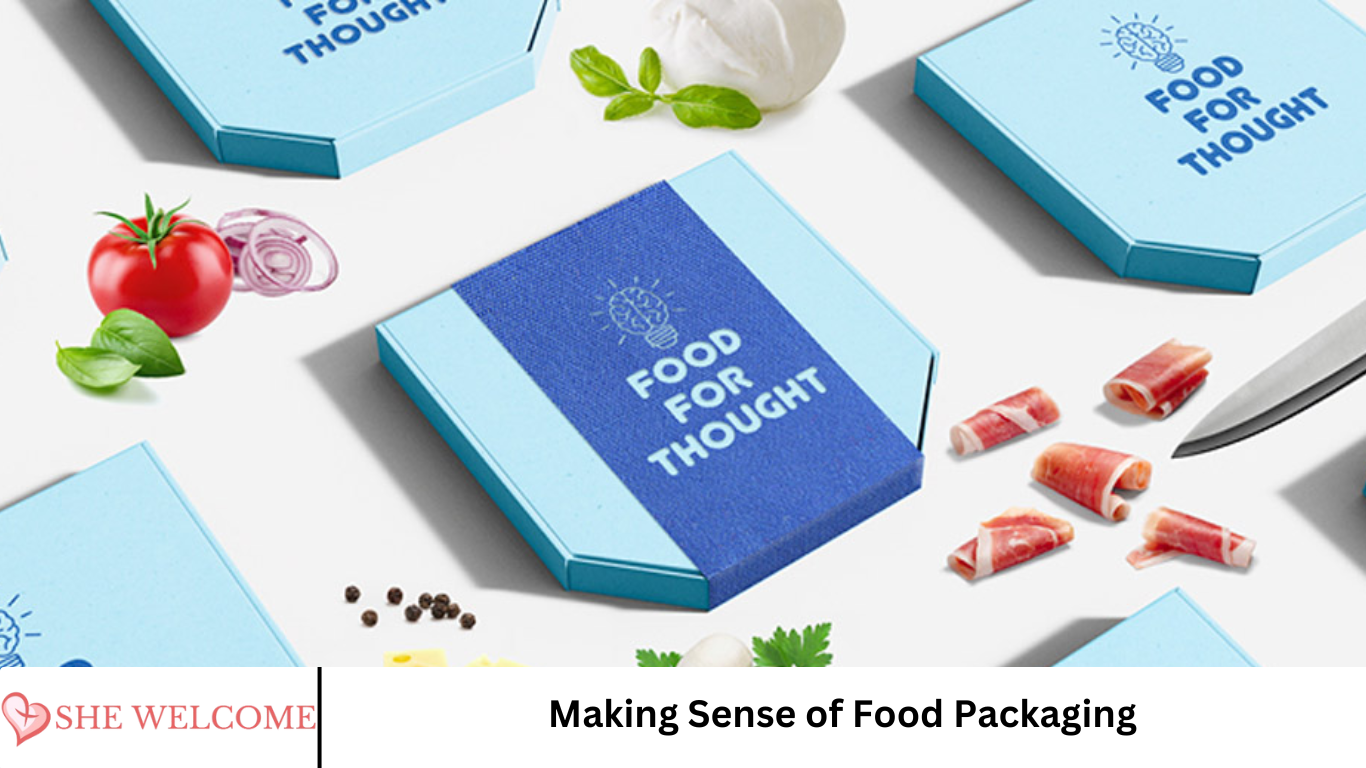Fast-paced world, food packaging plays a crucial role in our shopping experience. Whether you’re reaching for a snack at the convenience store or planning a week’s worth of groceries, understanding food packaging can empower you to make healthier, more informed choices.
This comprehensive guide aims to demystify the information found on food packages so that you, as a consumer, can navigate the grocery aisles with confidence.
More Read: Understanding Preventive Health: What It Is and Why It Matters
Why Food Packaging Matters
Food packaging serves multiple purposes: it protects the product, extends shelf life, and provides essential information. However, beyond these practical aspects, packaging is also a powerful marketing tool. Brands use colors, fonts, images, and buzzwords to influence consumer decisions. Knowing how to see past the marketing and focus on the facts is key to becoming a savvy shopper.
Front-of-Package Labels: The First Impression
The front of a food package is designed to grab your attention. Words like “natural,” “organic,” “low-fat,” and “sugar-free” are often displayed prominently. While these claims may sound appealing, they can sometimes be misleading.
Common Front-of-Package Terms:
- Natural: This term is not strictly regulated and may not mean much in terms of health.
- Organic: Certified organic foods follow strict guidelines regarding pesticide use and animal treatment.
- No Added Sugar: This doesn’t mean the product contains no sugar—just that no extra sugar was included during processing.
- Low-Fat: These products might still be high in sugar or calories.
Always flip the package to verify the claims by reading the nutrition facts and ingredient list.
Nutrition Facts Panel: Your Roadmap to Healthy Choices
Located usually on the back or side of the packaging, the Nutrition Facts panel provides detailed information about the nutrients in the product.
Key Components:
- Serving Size: Always check this first. The nutritional values listed are based on this specific quantity.
- Calories: Indicates how much energy you’ll get per serving.
- Macronutrients: Includes fat (saturated and trans), carbohydrates (fiber and sugar), and protein.
- Micronutrients: Lists vitamins and minerals like Vitamin D, calcium, iron, and potassium.
- % Daily Value (%DV): Helps you determine if a serving is high or low in a nutrient. 5% DV or less is low; 20% DV or more is high.
Understanding this panel can help you compare products and choose the one that best meets your dietary needs.
Ingredient List: The Fine Print
The ingredient list tells you exactly what’s in the product, listed in descending order by weight. This section is crucial for people with food allergies, sensitivities, or dietary restrictions.
What to Look For:
- Whole Ingredients: Look for whole grains, real fruits, and vegetables.
- Hidden Sugars: Ingredients like high-fructose corn syrup, cane juice, and maltose are all forms of sugar.
- Additives and Preservatives: These might include artificial colors, flavors, and stabilizers.
- Shorter is Better: A shorter ingredient list usually means the food is less processed.
Understanding Food Packaging Symbols
Various symbols and certifications can be found on packaging. Knowing what these mean can help guide your choices.
Common Symbols:
- USDA Organic: Indicates the product meets strict organic farming standards.
- Non-GMO Project Verified: The product doesn’t contain genetically modified organisms.
- Fair Trade Certified: Ensures ethical treatment of farmers and workers.
- Gluten-Free: Safe for people with celiac disease or gluten sensitivity.
- Recycling Symbols: Provide information on how to dispose of the packaging responsibly.
Marketing Tactics to Watch Out For
Manufacturers often use marketing tactics to make their products seem healthier than they are.
Examples:
- Green Packaging: May imply health or eco-friendliness but doesn’t guarantee it.
- Buzzwords: Terms like “superfood,” “immune-boosting,” or “clean” are often unregulated.
- Serving Tricks: Sometimes, packages contain multiple servings but appear to be single-serving sizes.
Being aware of these tactics helps you make decisions based on facts, not marketing.
How to Compare Products Effectively
When choosing between similar products, use the information on the packaging to make a side-by-side comparison.
Steps:
- Check Serving Sizes: Make sure you’re comparing equivalent amounts.
- Look at Calories and Nutrients: Choose options lower in added sugars, sodium, and unhealthy fats.
- Read Ingredient Lists: Go for items with fewer, whole-food ingredients.
- Use %DV: Choose items higher in beneficial nutrients like fiber, calcium, and iron.
Smart Shopping Tips
Here are some tips to help you become a more informed shopper:
- Don’t Shop Hungry: You’re more likely to make impulse buys.
- Stick to the Perimeter: Whole foods like produce, dairy, and meats are often located around the store’s edges.
- Read Before You Buy: Take a moment to read the label before adding an item to your cart.
- Use Apps: Tools like barcode scanners and nutrition apps can offer instant insights.
Special Considerations for Certain Diets
Whether you’re vegetarian, vegan, gluten-free, or managing a medical condition, understanding food packaging is even more important.
For Example:
- Diabetics: Should look for low sugar and high fiber content.
- Vegans: Need to check for hidden animal-derived ingredients like gelatin or casein.
- People with Allergies: Must read the entire ingredient list and allergen warnings.
The Role of Technology in Food Packaging
Smart packaging is becoming more prevalent. QR codes can now link to detailed product information, traceability data, and even recipes.
Future Trends:
- Augmented Reality (AR): Some brands are experimenting with AR to offer an immersive shopping experience.
- Blockchain: Being used for better traceability and transparency.
Frequently Asked Question
Why is it important to read food packaging?
Reading food packaging helps consumers make informed decisions about the nutritional value, ingredients, and health implications of the food they purchase. It also ensures people with dietary restrictions, allergies, or specific health goals avoid harmful or unsuitable products.
What is the most important part of a food label to check first?
Start with the serving size, as all other nutritional information is based on it. Then review calories, macronutrients (fat, protein, carbs), and the % Daily Value to assess how the food fits into your diet.
What does “% Daily Value” mean on a food label?
The % Daily Value (%DV) indicates how much a nutrient in one serving contributes to your total daily diet. As a rule of thumb:
- 5% DV or less is considered low
- 20% DV or more is considered high
Are terms like “natural” or “clean” on packaging regulated?
Not always. Terms like “natural,” “clean,” or “immune-boosting” are often unregulated and used primarily for marketing. Always check the ingredient list and nutrition facts to verify health claims.
What’s the difference between “organic” and “non-GMO”?
- Organic means the food meets specific farming and processing standards, avoiding synthetic pesticides and fertilizers.
- Non-GMO indicates the product does not contain genetically modified organisms but doesn’t guarantee organic practices.
How can I spot hidden sugars in ingredient lists?
Sugar can appear under many names, such as cane juice, maltose, dextrose, corn syrup, fructose, and honey. Check for multiple forms of sugar, especially if they appear high on the ingredient list.
What do food packaging symbols like USDA Organic or Fair Trade mean?
These symbols represent certifications:
- USDA Organic: Follows federal organic guidelines
- Fair Trade Certified: Ethical sourcing and labor practices
- Non-GMO Project Verified: No genetically modified ingredients
- Recycling Symbols: Packaging recyclability information
Conclusion
Understanding food packaging is essential for making informed and healthy food choices. While packaging can sometimes be overwhelming, learning how to read and interpret the labels, symbols, and marketing tactics empowers you to take control of your diet and well-being. Next time you’re grocery shopping, take a few extra minutes to examine the packaging. With the right knowledge, you can shop smarter and eat better.


